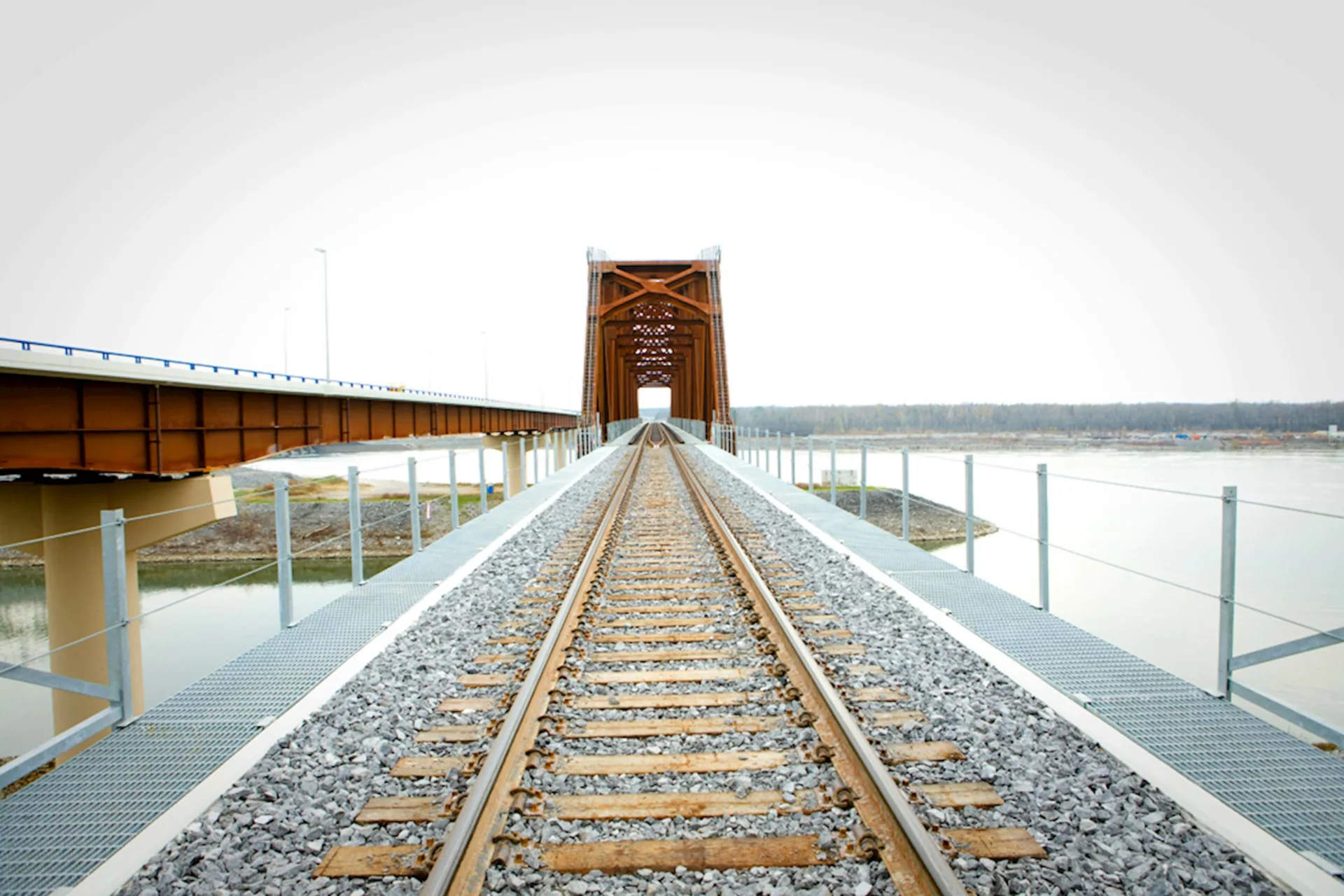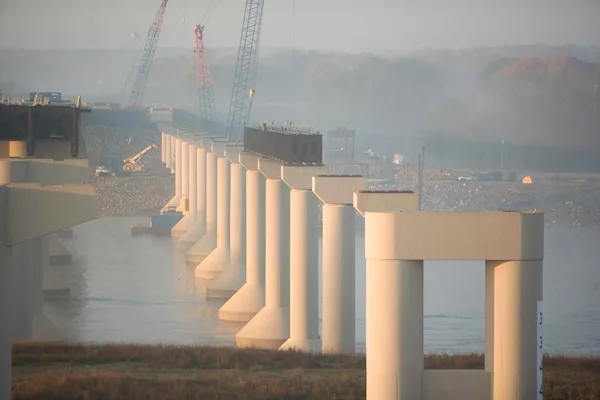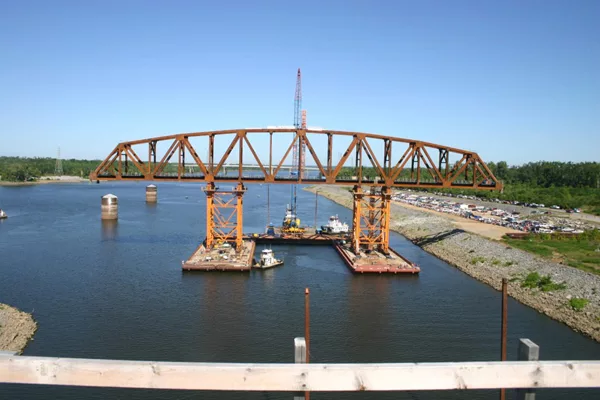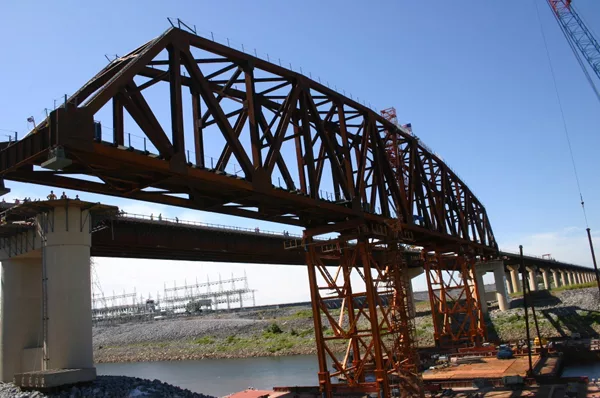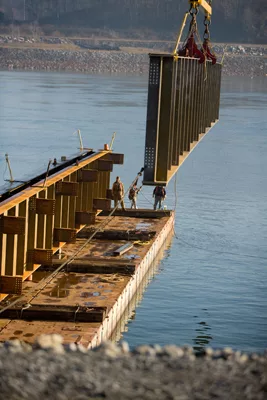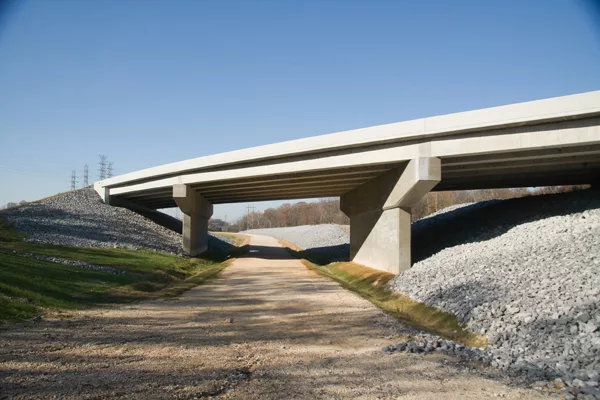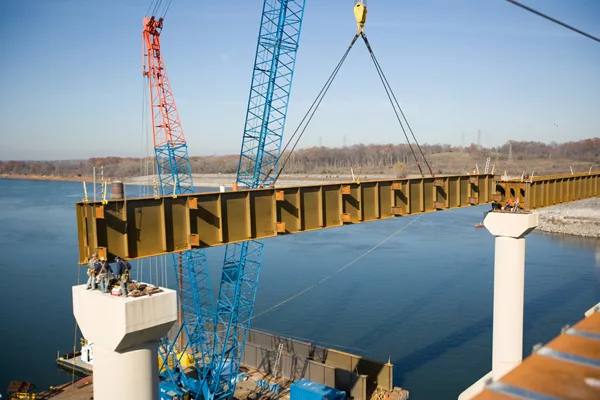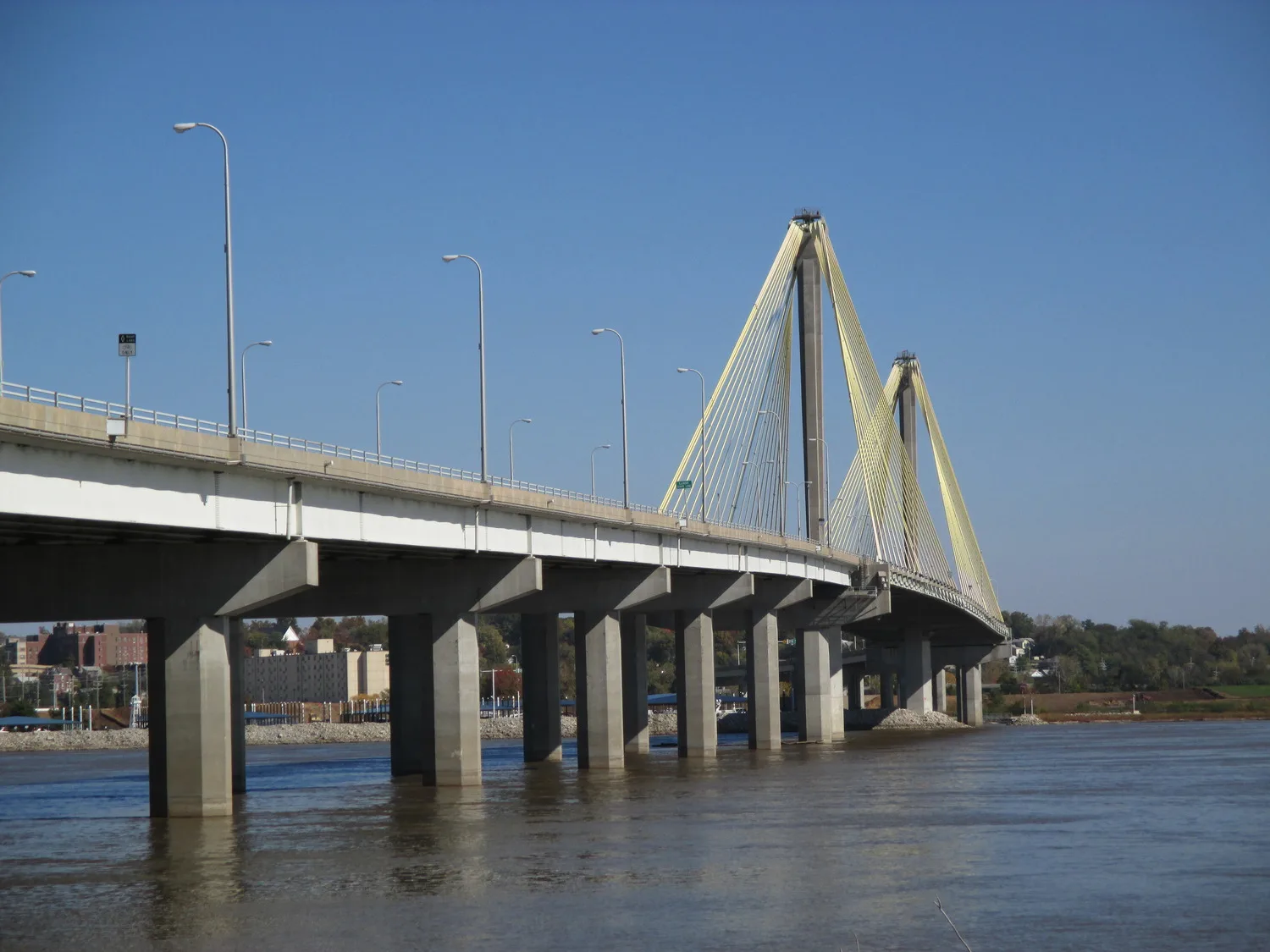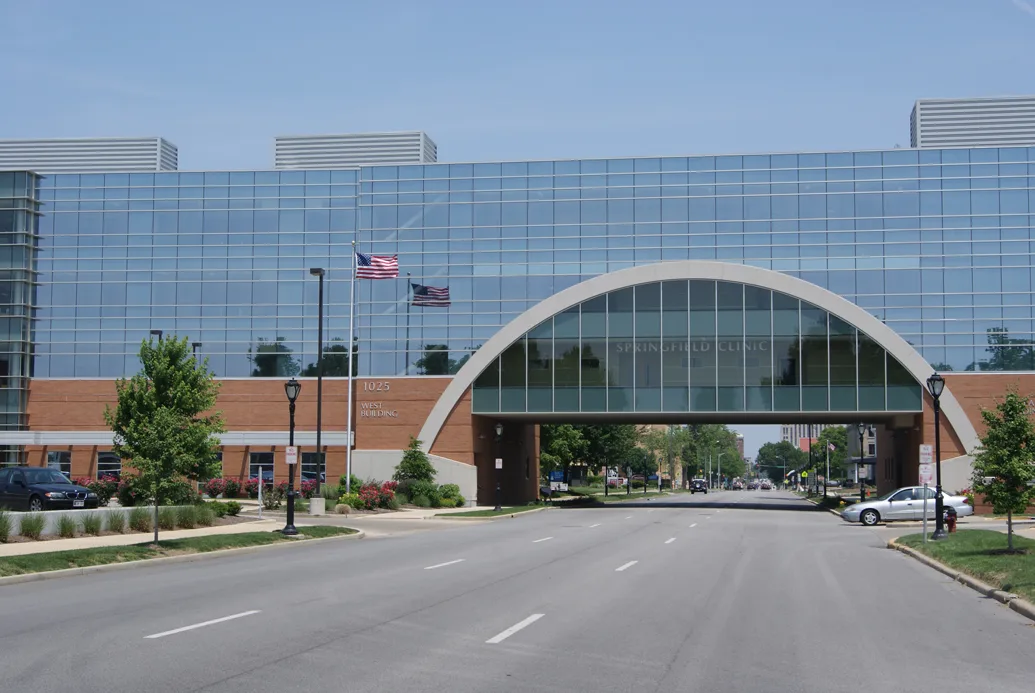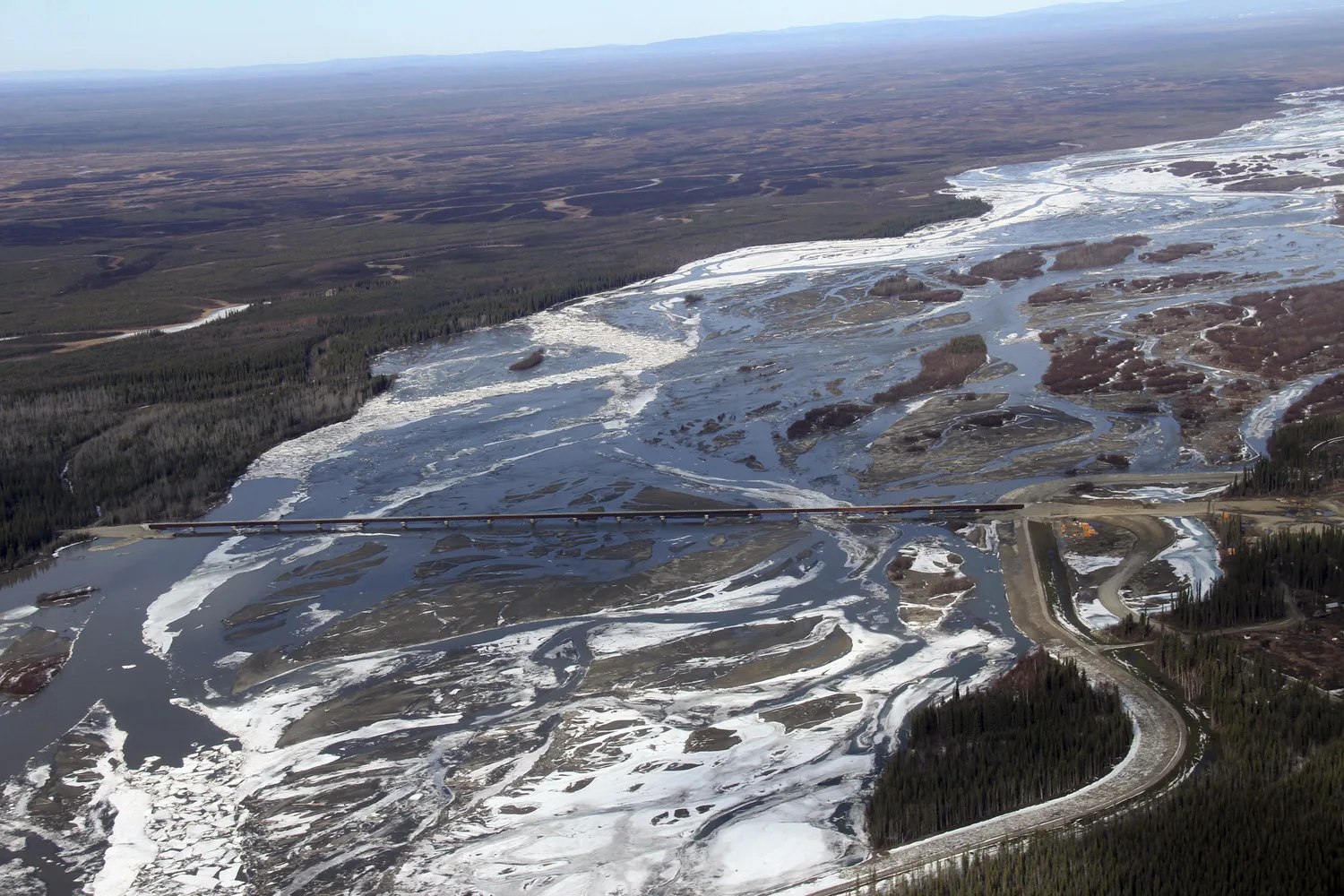 Awards
Awards
Honor Award, American Council of Engineering Companies of Illinois, 2011
Hanson was chosen to design a new 3,100-foot-long railroad bridge to carry rail traffic over the Tennessee River. This project includes approximately 12,500 feet of relocated single-track line involving embankment and cut-slope designs and associated roadway and utility relocations. In addition, the project must accommodate the building of a new lock.
Because barges traveling on the Tennessee River often experience traffic jams at the 600-foot Kentucky Lock in western Kentucky, construction is underway to build a new lock that will ensure passage of barges in configurations up to 1,200 feet long — reducing delays on the waterway. Hanson located the railroad bridge approximately 1,500 feet downstream from the existing bridge to allow room for the new lock construction.
‘THEY ALWAYS WENT THE EXTRA MILE’“In addition to the outstanding quality of their designs, Hanson excelled at working with the multitude of other design firms involved with the Kentucky Lock Project. They were a pleasure to work with and always went the extra mile for the Nashville District.” — Kimberley Spicer, civil engineer, U.S. Army Corps of Engineers, Nashville District
The new high-level bridge has 17 approach spans and a 500-foot main span over the navigation channel. The approach spans vary between 152 feet and 157 feet. Each approach span consists of a concrete-ballast pan supported by four 10-foot-deep composite steel-plate girders. The structural steel is Grade 50 weathering steel throughout, and the piers for the approach spans consist of a single concrete column supported by either steel piles or concrete drilled shafts. The design standards for this project include American Railway Engineering and Maintenance-of-Way Association (AREMA) specifications and standards furnished by the P&L Railway.
In addition to designing the bridge, Hanson supported the Nashville District’s staff in overseeing the bridge construction. Services included preparing a design memorandum, construction plans and specifications and providing construction-phase services for the relocation of the P&L Railway Bridge.
WHAT CLIENTS ARE SAYING“I found Hanson to be the best all-around engineering firm to work with in my 27 years of experience in working with engineering firms under contract for the Corps of Engineers.” — Don Getty, project manager, U.S. Army Corps of Engineers, Nashville District
Hanson facilitated coordination meetings at the project site. Because the railroad-bridge project involved numerous agencies and governmental entities, along with other consultants, Hanson provided a critical communications/problem-solving link in bringing them together.
Float-in construction was used for the railroad-truss main span to minimize obstruction to navigation. Rail traffic was maintained during construction except during the short time needed to realign the rails at each end of the project. The P&L Railway Bridge over Kentucky Highway 282 was built adjacent to the existing structure and rolled into place during the rail-realignment process.
